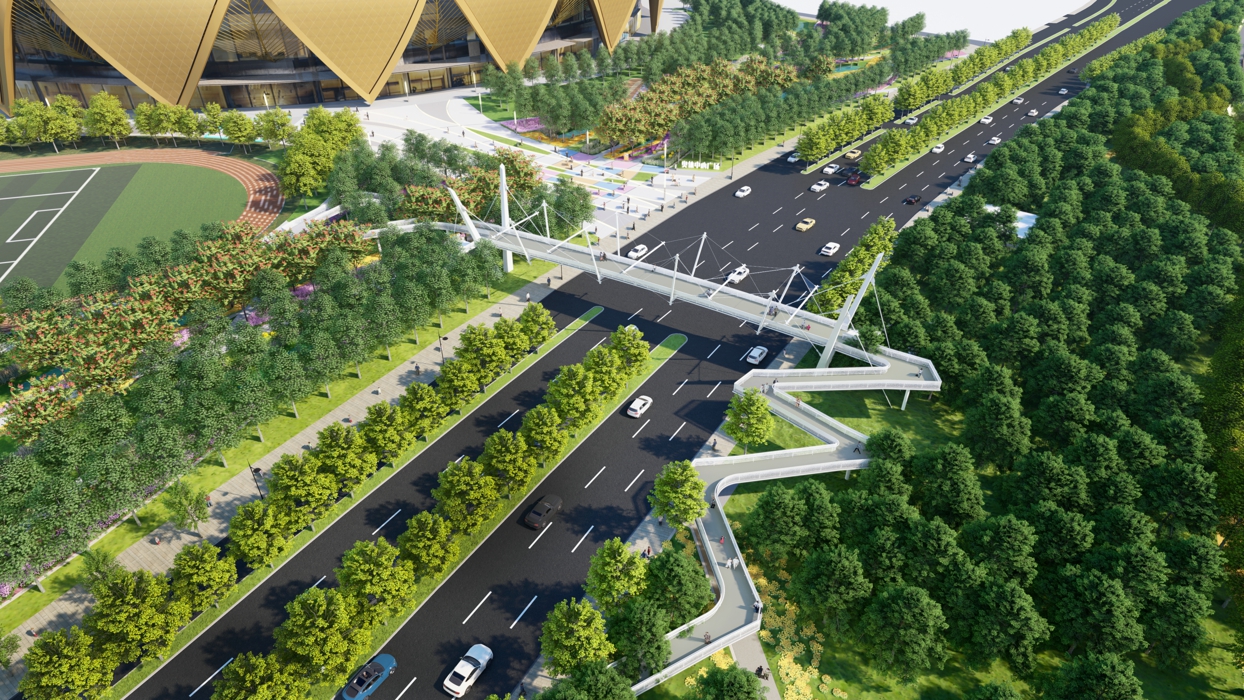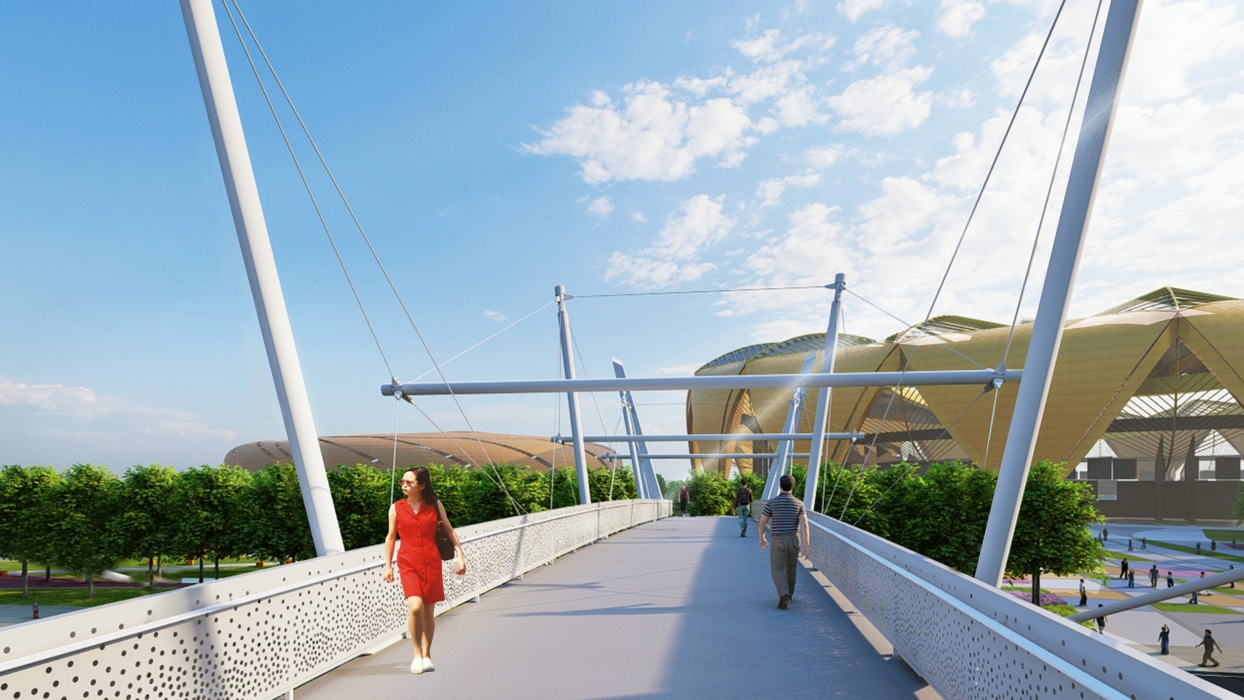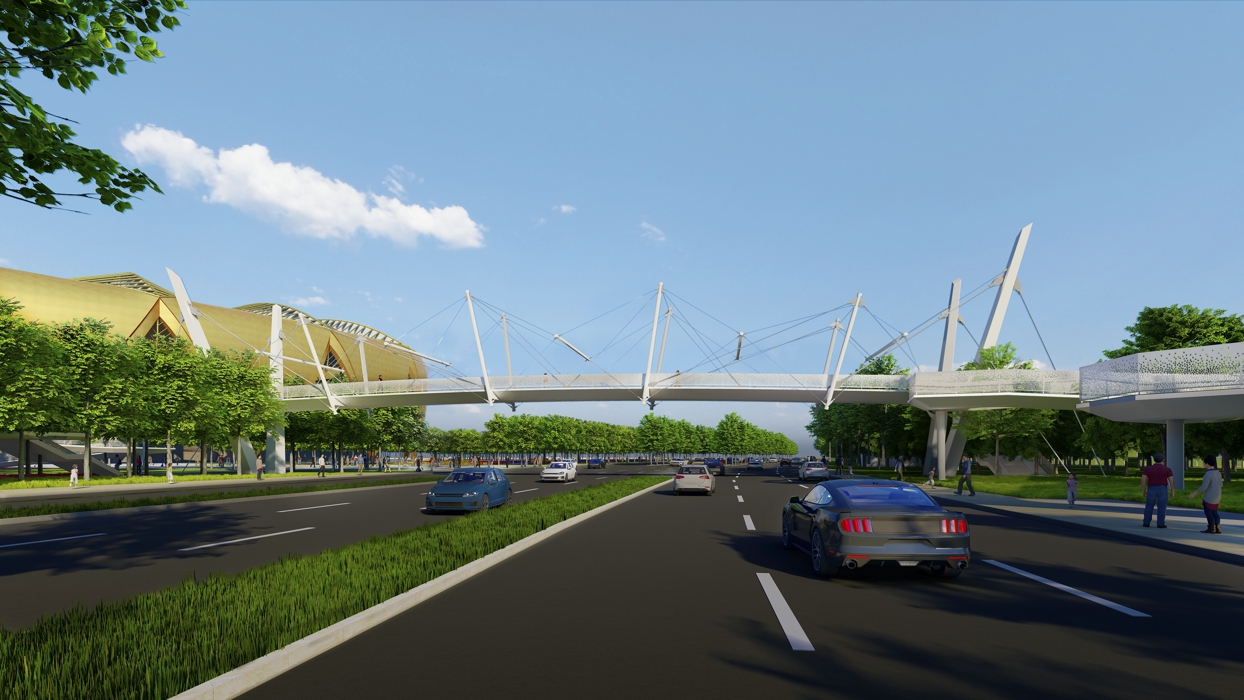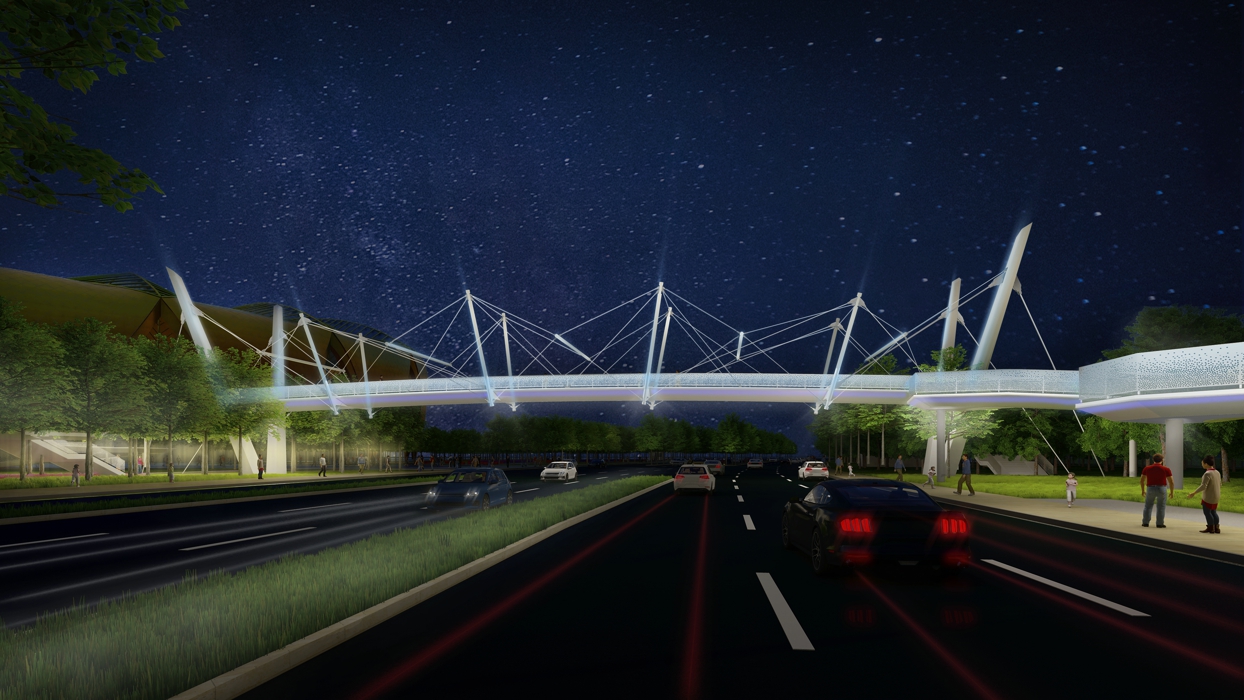Lanzhou Aoti Bridge
Project Information
- Project Location:
- China Lanzhou, Gansu
- Project Scale:
- 299.5m
- Design Time:
- March 2022
Project Profile
The project is located on the north side of the Aoti Center Stadium in Lanzhou City, along Nanbinhe West Road, stretching west to Shen’an Yellow River Bridge and east to Huanghe Tower.
Through this project, the Lanzhou Aoti Center will be organically connected with cultural tourism spots such as the Yellow River Scenic Line and Huanghe Tower, becoming a new landmark showcasing Lanzhou’s urban culture. It will continuously strengthen ecological restoration of the Yellow River floodplain and urban green spaces, enhance the overall landscape quality of key segments of the Yellow River landscape interface and cityscape, create urban sports and leisure scenes for citizens, and realize the integrated development of the city and river. This will establish an excellent model for the “One River, Two Banks” concept of Lanzhou’s new-era Yellow River Scenic Line.
The landscape pedestrian bridge consists of one main line and two stairways. The main line is 299.47 meters long with a main span of 55 meters and a deck clear width of 4.6 meters; the ramp’s maximum span is 18 meters, with a clear width of 2.3 meters and local widenings; the stairways have a maximum span of 11.92 meters with a clear width of 3.3 meters. The main span uses a prestressed integrated structure, while the ramps use continuous steel structures. The clearance under the bridge is 5 meters (for vehicular traffic), meeting urban arterial road clearance requirements. Structural columns are located at the edge of pedestrian sidewalks. The clearance above the non-motorized vehicle lane is 3.5 meters, and above the pedestrian lane is 2.5 meters. Ancillary facilities include railings, drainage systems, and lighting.
As China’s only city developed across the Yellow River and an international metropolis oriented toward the Belt and Road Initiative, Lanzhou’s Aoti landscape pedestrian bridge occupies a gateway position near the Yellow River within the Aoti Center district. It is an important urban landmark representing Lanzhou’s modern character and design quality. The pedestrian bridge spans across the west side of Nanbinhe West Road, covering the main pedestrian entrance plaza of the Aoti Center, municipal sidewalks on the east side, and the riverside entrance plaza along the Yellow River. It provides safe, convenient, and comfortable passage for citizens and the surge of spectators during events. Due to restrictions imposed by existing trees and high-voltage lines, the Aoti Bridge adopts a zigzag gentle slope design at its lower end to meet barrier-free access requirements. Combined with the green belts on both sides of Nanbinhe West Road and shaded by tree arrangements, it creates a slow-travel experience weaving through forests with visual effects of the bridge nestled among the trees. The bridge structure uses an internationally advanced integrated prestressed system, featuring a form that is free, light, and balanced. It achieves maximum span with minimal steel consumption, fully demonstrating the balance of strength and beauty. This matches the city’s pursuit of development, openness, and inclusiveness, while also resonating with the Olympic spirit’s pursuit of the beauty of healthy physical form.




